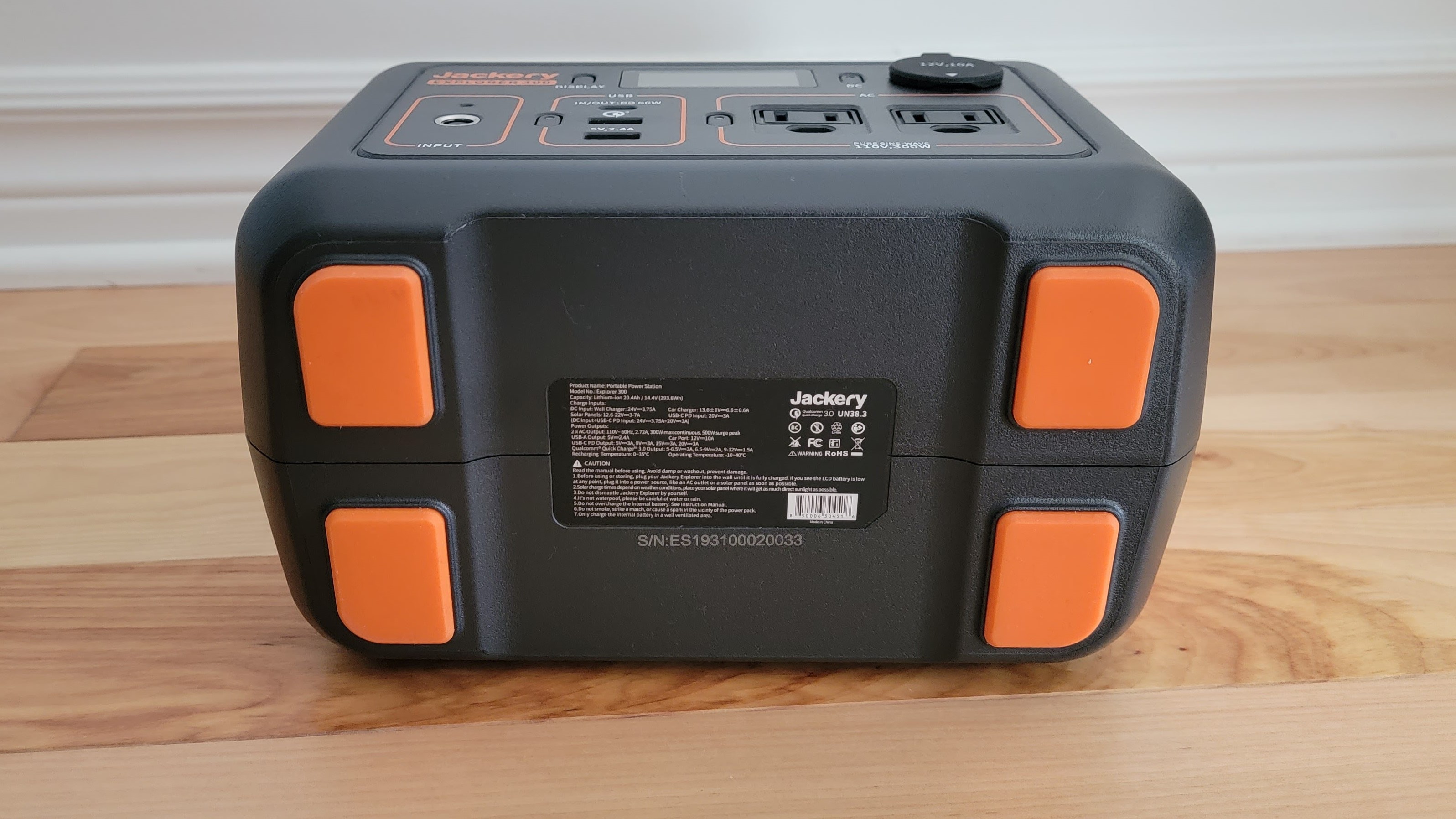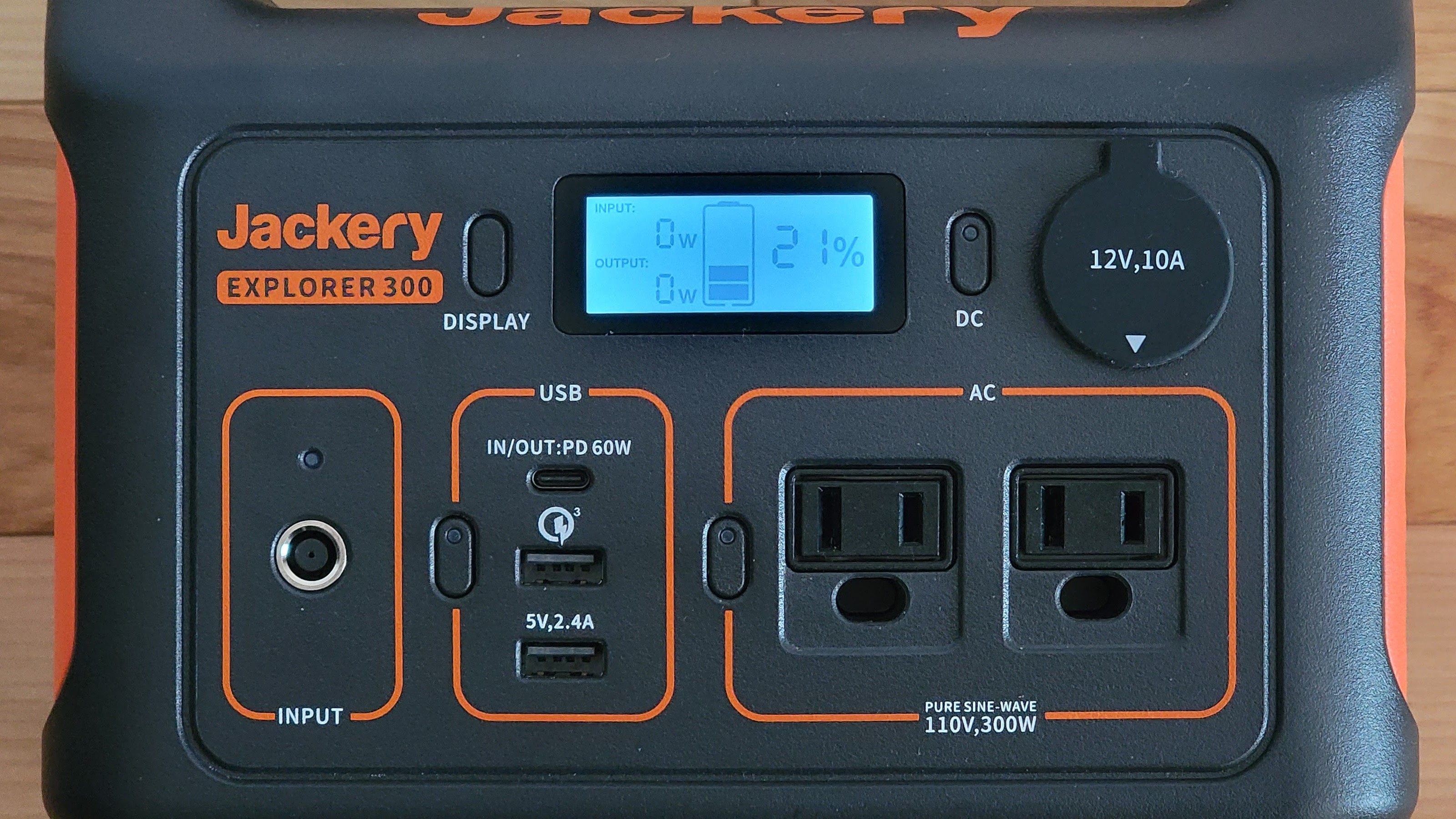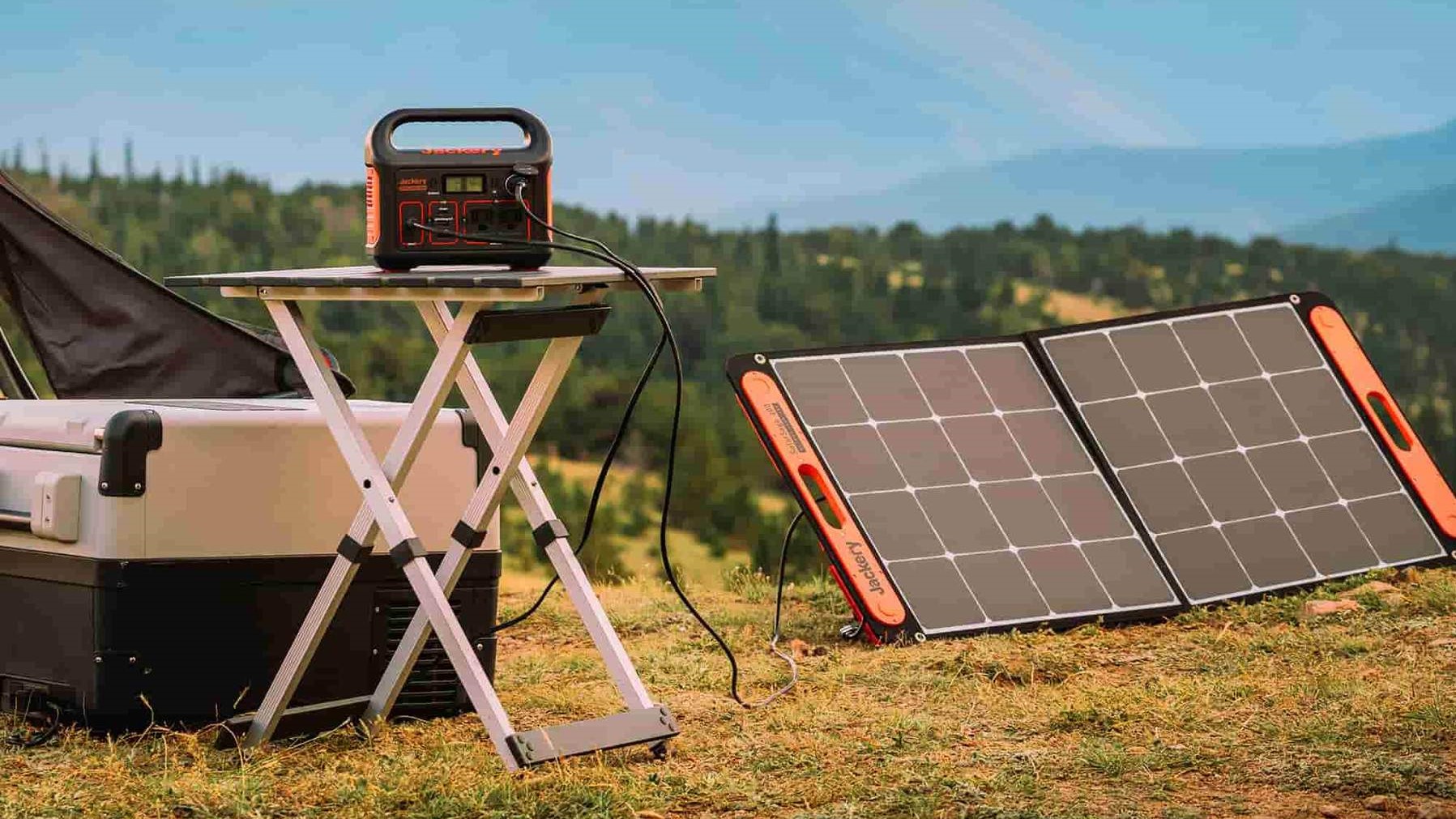TechRadar Verdict
The Jackery Explorer 300 packs an impressive battery capacity despite its diminutive size. This portable power station is small enough to bring with you anywhere without skimping on ports or features and being able to charge it over USB-C is another big plus.
Pros
- +
Small and light
- +
Can charge through USB port
- +
Good AC inverter efficiency
Cons
- -
No flashlight
- -
Flaky AC power measurement
Why you can trust TechRadar
Two-minute review
Jackery needs no introduction when it comes to battery-based portable power stations. They are pioneers with the first portable lithium-based station back in 2015. The Explorer series has been through many iterations and now includes features such as the ability to be charged using solar panels. In the end, it remains a reliable portable power source with output sockets suitable for most electronic devices.
Take Jackery’s best-seller, the Explorer 1000, and shrink it by two-third and you get the Explorer 300 station, a power source that has ease-of-use and lightweight written all over. It keeps the reliability of its siblings by using high-quality components while having a simple but effective user interface.
As with many high-end brands like Apple and Samsung, Jackery carries a premium on the price of its products. The Jackery Explorer 300 costs $299.99 which includes a 300W pure-sine inverter and a 293Wh lithium-ion NMC battery. This is in fact in line with their other products when it comes to dollar per WHr. Jackery is offering 30% off right now on their website for the Explorer 300.

Design
True to the Jackery spirit, the Explorer 300 has the same shape and color motif as its bigger siblings. The black plastic case measures 23cm x 13cm x 20cm and feels solid. Four pads located on the bottom prevent any skid.

The built-in handle allows carrying the 3.2kg generator effortlessly where it is needed. The battery is based on lithium-ion NMC technology and offers at least 500 charge cycles.

The power station is shipped with a bag containing the instruction manual, a 90W wall charger, and a car charging cable. Battery charging can be done either through a dedicated socket and the supplied AC adapter or using the USB Type-C socket. These can combine to decrease the charging time to two hours.

The user interface, located on the front panel, uses an LCD to provide status information such as the charge remaining in terms of percent and measurements for input and output power. Push buttons are used to activate various outputs of the power station.
The main DC section includes a single 12V/10A output in the form of a cigarette lighter socket. This is complemented by a separate USB section that has three outputs: a Type-C socket that can charge at up to 60W thanks to USB Power Delivery (PD) and two Type-A sockets including one supporting the Qualcomm Quick Charge standard. Finally, a small but beefy 300W pure sine-wave AC inverter supplies two AC sockets.
In use
The Explorer 300 will start charging as soon as a DC source is connected with a voltage range between 12V to 30V. In addition to the 90W AC adapter, a 12V car battery can be used as a power source through the supplied car adapter. Since the charging power is capped at 90W, going to a higher voltage will not decrease the charging time. A blue LED just above the input socket lights up whenever the Jackery is charging.

The power station also supports charging using solar panels and has increased efficiency being based on the MPPT technology. A full charge is reached in under six hours when using a 100W panel. A third charging option is also available through the Type-C socket. This is really nice since one can replace the supplied AC adapter with a phone or laptop charger.
The Jackery display has a white backlight that turns on whenever a USB device is connected or when a button is pressed. To save energy, the backlight goes off after 15 seconds while not connected to the grid. The AC output measurement lags for a few seconds. Removing an AC load will still show power being drawn before falling to zero. LEDs adjacent to the output sections indicate if a socket is activated or not. It is recommended to turn unused sections off in order to avoid draining the battery.
The Jackery Explorer 300 AC inverter has an efficiency of 85%. A consequence of this will be that the fan will turn on for medium to high loads, generating a low-level hum. The lost energy will also give fewer working hours out of the battery than the advertised 293W/hr. The actual capacity is hence reduced to 250W/hr when using the Explorer 300 solely as an AC inverter.
The power station supports a pass-through mode where charging and discharging can happen simultaneously. In an office setting, this is similar to an uninterruptible power supply (UPS) where the battery and AC inverter take over whenever there is a power outage. This makes the Explorer 300 suitable in an office, only being limited by its 300W output power.
The competition
When Jackery started selling its Explorer series back in 2015, only a handful of battery-based generators were available to the public. How things have changed since then. We now have a crowded space with new portable power stations popping up every month.
The Ecoflow RIVER power station comes with a 288Wh battery and three 600W AC outlets. At $499, it is more expensive than the Jackery. Additional features such as the built-in AC adapter makes it both heavier and bigger than the Explorer 300.
The GOLABS R300 offers strong competition to the Explorer 300, having similar dimensions. The electrical specifications are also close, the GOLABS having a 299Wh battery and a 300W AC inverter. The R300 uses a different lithium battery technology which makes it heavier while the warranty offered is half what Jackery offers.
Final verdict
The biggest advantage of the Explorer 300 remains its diminutive size. The battery capacity for that volume is impressive. High build quality is something that you would expect from Jackery and that is exactly what you get with the Explorer 300. The ability to charge through the USB socket is also something we found to be very practical. The simplicity of the user interface and abundance of output sockets makes it an enjoyable device to use. It isn’t perfect by all means. The AC power measurement could be better and having a built-in flashlight is always something handy during an outage, something that the Explorer 300 lacks.
We've also highlighted the best portable power stations and the best portable laptop battery chargers
My interest has been piqued by everything electronic since a young age, with a penchant for the dark art of tearing things apart. My daily duty is to marry software and hardware modules and I have to admit that this is much harder than cooking. When I’m not busy at work, I’m on the lookout for the latest and greatest hack! I am passionate about portable power generators (or power stations) as well as maker products such as the Raspberry Pi and any similar SBC (single board computers)

